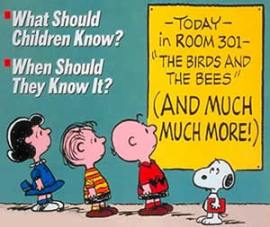 One of education reform’s ugly heads is standardized testing, and it has become even uglier with Common Core, in spite of clear research and solid evidence that it is not only useless, it is actually harmful to students, teachers and schools. Common Core continues the trend of ignoring what works: authentic assessment.
One of education reform’s ugly heads is standardized testing, and it has become even uglier with Common Core, in spite of clear research and solid evidence that it is not only useless, it is actually harmful to students, teachers and schools. Common Core continues the trend of ignoring what works: authentic assessment.
An attachment to numbers and data has led our education system down the road of hollow data, for standardized testing does not measure what data mongrels want and claim that it does. We are at the highest level of standardized testing our country has ever known, much higher than any other country in the world. It’s become a data feeding frenzy. Alfie Kohn former teacher, subject-matter expert and very vocal critic of the current system of standardized testing, lays out the best discussion of this I have unearthed so far in his book “The Case Against Standardized Testing: Raising the Scores, Ruining the Schools.” He notes early in the first chapter that corporations who develop and score exams, as well as teaching materials aligned with the exams, are profiting billions of dollars each year, all at the expense of our students, our teachers, and our schools. But, while these standardized tests may be more efficient, they are less effective, and don’t test important abilities. They don’t measure creativity, true problem solving (beyond memorizing a math formula), innovation, values, effort, commitment, compassion or ethical reflection. Because teachers are stuck teaching to the test for any hope of survival, that means many important things aren’t taught either.
I’ve done quite a bit of research on this topic, and reliable resources, including Alfie Kohn, all make the same points:
- Standardized tests measure how fast students can answer certain questions, what material they could memorize, and how well they take tests.
- Standardized tests are not balanced, leaving important considerations outside the immediate realm of test-taking unaccounted for. This includes disabilities, testing anxiety (which, by the way, is on the rise), lack of sleep, home life, external stressors, or mental health.
- Standardized tests do not measure a student’s learning and understanding of the material, regardless of how many times Common Core authors throw in the sentence “explain your answer.” In fact, higher scores are notably associated with relatively shallow thinking. Kohn lays this out very well in his book.
- Errors are not only inherent in the tests themselves, but the scoring process is deeply flawed as well. Pearson was nailed in 2011 when it was discovered that they post ads on Craiglist for test scorers at $12 an hour, claiming that scorers needed a college degree, but hiring mostly those who not only did not have a degree, but many who had dropped out of high school. Read Todd Farley’s book “Making the Grade” for an insider’s account.
- Our current system of fallacious standardized testing is used as the basis for flunking kids, firing teachers, punishing parents and closing schools.
Alfie Kohn lists four red flags of flawed testing:
- Beware of tests that are timed. If students must complete an examination within a specified time period, this means that a premium is placed on speed as opposed to
 thoughtfulness or even thoroughness.
thoughtfulness or even thoroughness. - You should be worried if tests are given frequently. It is neither necessary (in terms of collecting information) nor desirable (in terms of improving the quality of instruction) to test students year after year after year.
- Be prepared to protest if tests are given to young children. Students below the fourth grade simply should not be subjected to standardized examinations…because it is difficult, if not impossible, to devise such an assessment in which they can communicate the depth of their understanding…skills develop rapidly and differentially in young children…and leads to one-size-fits-all (which is to say, poor) teaching.
- Look out for tests that are norm-referenced…they provide little to no information about…what the individual can do. They tell that one student is less proficient than another, but do not tell ow proficient either of them is with respect to the subject matter tasks involved.
The American Psychological Association’s Code of Fair Testing practices in Education starts out by stating “The Code of Fair Testing Practices in Education (Code) is a guide for professionals in fulfilling their obligation to provide and use tests that are fair to all test takers regardless of age, gender, disability, race, ethnicity, national origin, religion, sexual orientation, linguistic background, or other personal characteristics. Fairness is a primary consideration in all aspects of testing.” Common Core obliterates the fairness principle.
In addition, under Rights of Test Takers: Guidelines for Testing Professionals, you will note the emphasis on professionalism and administering tests that are reliable and relevant:
“Because test takers have the right to be tested with measures that meet professional standards that are appropriate for the test use and the test taker, given the manner in which the results will be used, testing professionals should:
- Take steps to utilize measures that meet professional standards and are reliable, relevant, useful given the intended purpose and are fair for test takers from varying societal groups.
- Advise test takers that they are entitled to request reasonable accommodations in test administration that are likely to increase the validity of their test scores if they have a disability recognized under the Americans with Disabilities Act or other relevant legislation.”
Just as the authors of the Common Core standards have admitted that they do not have the qualifications to develop educational standards, the authors of these standardized tests don’t either.
So, what do we do then?
We look at students’ work. We talk to the experts, the teachers. We talk to the students. This is known as authentic assessment, the word “authentic” being used for a reason. Many other countries do this. Research projects, oral presentations, portfolios, problem solving activities and research projects tell us what we need to know, including higher order thinking skills, understanding, and deeper knowledge.
“If the goal is simply to sort, stratify, and rank, portfolios add little if you already have test data,” says Monty Neill, executive director of FairTest, a Massachusetts-based organization that opposes standardized testing. “If the goal is rich feedback at individual or school level, portfolios of some sort are indispensable while tests are of minimal use as they provide far too little information.”
FairTest addresses the accountability piece with School Quality Reviews, conducted every 4-5 years, at the school, in person, by professionals. The goal is not punitive; rather, the goal is actual improvement. I am certified as a school accreditation reviewer, and have conducted several such reviews. This method is more thorough and more meaningful for all parties involved than everything Common Core has foisted on us.
We don’t need more tests, harder tests, and more expensive testing systems that divert much-needed funds from our schools. We need authentic assessment and accountability, and a moratorium on standardized testing. We need to allow our students to get back to learning, and our teachers to get back to teaching. Big corporations need to go find their markets somewhere else.
Additional Reading:
Portfolio Assessment: Can It Be Used to Hold Schools Accountable?
Standardized Testing and Its Victims










